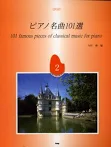Debussy, Claude Achille : Children's corner "Golliwog's cakewalk"
Work Overview
Genre:pieces
Total Playing Time:2 min 30 sec
Copyright:Public Domain
Commentary (1)
Author : Hayashikawa, Takashi
Last Updated: April 18, 2019
[Open]
Author : Hayashikawa, Takashi
Golliwogg's Cakewalk
"Golliwogg" refers to a Black character introduced by the British children's author Florence Kate Upton (1873–1922) in her 1895 work, The Adventures of Two Dutch Dolls and a Golliwogg. "Cakewalk" is a dance that originated among African Americans in the late 19th century in the United States, and it is said to have been named because cakes were awarded to the winners of contests.
While composers like Gottschalk had already incorporated American popular music into their works in the 19th century, these influences significantly impacted European music from the 20th century onwards. This piece is likely one of the earliest examples of such influence.
The musical example below is an actual instance of a cakewalk from that period.
Example of a Cakewalk (from Abe Holzmann: “Smoky Mokes” Cake Walk and Two Step, New York: Feist and Frankenthaler, 1899)
Golliwogg's Cakewalk, mm. 10-14 (Is the red box a Tristan chord?)
The middle section contains a quotation from the Prelude to Wagner's music drama Tristan und Isolde, accompanied by the performance indications "Cédez" (gradually slower) and "avec une grande émotion" (with great emotion). According to the recollections of Bauer, who performed the premiere, Debussy himself instructed him to "pay attention to the quotation from Wagner." Debussy, who was already anti-Wagner at the time, is observed to have significantly slowed the tempo and exaggerated the expression each time this phrase appeared in his own piano roll performance. Furthermore, whether by coincidence or intention, the harmony at the beginning of the theme is enharmonically related to the Tristan chord (see the musical example above).
Wagner: Prelude to the Music Drama Tristan und Isolde, opening (red box indicates Tristan chord)
Golliwogg's Cakewalk, mm. 58-67
Arrangements & Related Works(2)
PTNA & Partner Channel Videos(6items)
Sheet MusicView More
Scores List (50)

(株)ドレミ楽譜出版社

(株)全音楽譜出版社

(株)音楽之友社

(株)ヤマハミュージックエンタテインメントホールディングス

(株)全音楽譜出版社

(株)音楽之友社

KMP(ケイ・エム・ピー) ケイエムピー

ハンナ(ショパン)

(株)ドレミ楽譜出版社

ミュージックランド

(株)リットーミュージック

ミュージックランド

ミュージックランド

KMP(ケイ・エム・ピー) ケイエムピー

(株)リットーミュージック

ミュージックランド

ミュージックランド

ミュージックランド

(株)ドレミ楽譜出版社

(株)全音楽譜出版社

ハンナ(ショパン)

ミュージックランド

(株)ドレミ楽譜出版社

(株)ドレミ楽譜出版社

(株)ドレミ楽譜出版社

ハンナ(ショパン)

ハンナ(ショパン)

(株)ドレミ楽譜出版社

(株)ドレミ楽譜出版社

ミュージックランド

(株)全音楽譜出版社

ミュージックランド

(株)全音楽譜出版社

(株)全音楽譜出版社

ミュージックランド

ミュージックランド

(株)シンコーミュージックエンタテイメント

(株)ヤマハミュージックエンタテインメントホールディングス

ヘンレー

ヘンレー

ベーレンライター社

ヘンレ社(ヤマハ)

ヘンレー

(株)東音企画(バスティン)

(株)ヤマハミュージックエンタテインメントホールディングス

(株)学研プラス

Neil A. Kjos Music Company

(株)全音楽譜出版社








